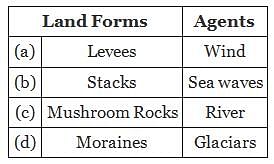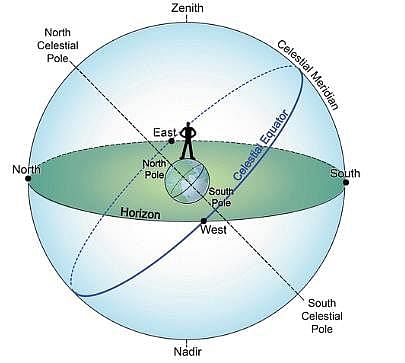UTET Paper 2 Mock Test - 2 (Social Science) - UTET MCQ
30 Questions MCQ Test UTET Mock Test Series 2024 - UTET Paper 2 Mock Test - 2 (Social Science)
What effort will you make for bringing change in the behaviour of a problematic child?
As a teacher in a class, you are strongly opposed to ragging, and keeping this in mind, you put up posters related to it throughout the school and also form a committee, children who join you consider this idea to be good, so what level of Kohlberg will it fall under?
| 1 Crore+ students have signed up on EduRev. Have you? Download the App |
Which of the following is considered a sign being gifted?
The ‘fear of failure‘ needs to be discouraged in children within a classroom because:
Frobel's most important contribution to education was his development of which of the following?
Which of the following type of thinking will help in the development of problem-solving skills?
Which one of the following is not one of the stages of learning?
Which of the following tool is best use in ICT for student with visually impairment?
निर्देश: दिए गए पद्यांश को पढकर निम्नलिखित प्रश्नों के सही विकल्प छाँटिएI
पूछे सिकता-कण से हिमपति!
तेरा वह राजस्थान कहाँ?
वन-वन स्वतंत्रता-दीप लिये
फिरनेवाला बलवान कहाँ?
तू पूछ, अवध से, राम कहाँ?
वृंदा! बोलो, घनश्याम कहाँ?
ओ मगध! कहाँ मेरे अशोक?
वह चंद्रगुप्त बलधाम कहाँ ?
पैरों पर ही है पड़ी हुई
मिथिला भिखारिणी सुकुमारी,
तू पूछ, कहाँ इसने खोयीं
अपनी अनंत निधियाँ सारी?
री कपिलवस्तु! कह, बुद्धदेव
के वे मंगल-उपदेश कहाँ?
तिब्बत, इरान, जापान, चीन
तक गये हुए संदेश कहाँ?
वैशाली के भग्नावशेष से
पूछ लिच्छवी-शान कहाँ?
ओ री उदास गंडकी! बता
विद्यापति कवि के गान कहाँ?
तू तरुण देश से पूछ अरे,
गूँजा कैसा यह ध्वंस-राग?
अंबुधि-अंतस्तल-बीच छिपी
यह सुलग रही है कौन आग?
प्राची के प्रांगण-बीच देख,
जल रहा स्वर्ण-युग-अग्निज्वाल,
Q. कवि हिमपति से किसके बारे में पूछने के लिए कह रहा है?
दिए गए गद्यांश के आधार पर पूछे गए प्रश्नों के उत्तर के लिए सबसे उपयुक्त विकल्प का चयन कीजिए।
गोंड जनजाति, भारत की एक प्रमुख जातीय समुदाय हैं। भारत के कटि प्रदेश- विंध्यपर्वत, सिवान, सतपुड़ा पठार, छत्तीसगढ़ मैदान में दक्षिण तथा दक्षिण-पश्चिम - में गोदावरी नदी तक फैले हुए पहाड़ों और जंगलों में रहने वाली आस्ट्रोलायड नस्ल तथा द्रविड़ परिवार की एक जनजाति, जो संभवत: पाँचवीं-छठी शताब्दी में दक्षिण से गोदावरी के तट को पकड़कर मध्य भारत के पहाड़ों में फैल गई। यह एक स्वतंत्र जनजाति थी, जिसका अपना राज्य था और जिसके 52 गढ़ थे। मध्य भारत में 14वीं से 18वीं शताब्दी तक इसका राज्य रहा था। मुग़ल शासकों और मराठा शासकों ने इन पर आक्रमण कर इनके क्षेत्र पर अधिकार कर लिया और इन्हें घने जंगलों तथा पहाड़ी क्षेत्रों में शरण लेने को बाध्य किया। गोंड जनजाति के लोग काले तथा गहरे भूरे रंग के होते हैं। गोंड अपने वातावरण द्वारा प्रस्तुत भोजन सामग्री एवं कृषि से प्राप्त वस्तुओं पर अधिक निर्भर रहते हैं। इनका मुख्य भोजन कोदों, ज्वार और कुटकी मोटे अनाज होते हैं, जिन्हें पानी में उबालकर 'झोल' या 'राबड़ी' अथवा 'दलिया' के रूप में दिन में तीन बार खाया जाता है। रात्रि में चावल अधिक पसन्द किये जाते हैं। कभी-कभी कोदों और कुटकी के साथ सब्जी एवं दाल का भी प्रयोग किया जाता है। गोंड खेतिहर हैं और परंपरा से दहिया खेती करते हैं जो जंगल को जलाकर उसकी राख में की जाती है और जब एक स्थान की उर्वरता तथा जंगल समाप्त हो जाता है तब वहाँ से हटकर दूसरे स्थान को चुन लेते हैं। किंतु सरकारी निषेध के कारण यह प्रथा बहुत कम हो गई है। अनेक गोंड लंबे समय से हिन्दू धर्म तथा संस्कृति के प्रभाव में हैं और कितनी ही जातियों तथा कबीलों ने बहुत से हिन्दू विश्वासों, देवी देवताओं, रीति रिवाजों तथा वेशभूषा को अपना लिया है। पुरानी प्रथा के अनुसार मृतकों को दफनाया जाता है, किंतु बड़े और धनी लोगों के शव को जलाया जाने लगा है। स्त्रियाँ तथा बच्चे दफनाए जाते हैं।
Q. हिन्दी भाषा में 'कटि' शब्द का क्या अर्थ है?
भाषा की कक्षा में बालको की मौखिक अभिव्यक्ति के दौरान किया जाने वाला आकलन है।
बहुभाषिक कक्षा में एक बालक हिंदी तथा दूसरा हड़ौती बोली बोलता है। वैज्ञानिक दृष्टि से भाषा और बोली में-
What do you say when you see a man who is eight feet tall?
Direction: Read the following passage and answer the questions given below.
Biodiversity for food and agriculture is among the earth’s most important resources. Crops, farm animals, aquatic organisms, forest trees, micro-organisms, and invertebrates – thousands of species and their genetic variability make up the web of biodiversity in ecosystems that the world’s food production depends on. Biodiversity is indispensable, be it insects pollinating plants, microscopic bacteria needed for making cheese, diverse breeds of livestock needed for living even in the harshest of environments, or the thousands of varieties of crops that sustain food security worldwide. For thousands of years, humankind has used, developed, and relied on biodiversity for food and agriculture. Biodiversity, and in particular genetic diversity, is being lost at an alarming rate. With the erosion of these resources, mankind loses the potential to adapt to new socio-economic and environmental conditions, such as population growth and climate change. Maintaining biodiversity for food and agriculture is a global responsibility. Risking biodiversity to man-made or other factors will always lead to an extremely large-scale famine of sheer magnitude. The FAO Commission on Genetic Resources for Food and Agriculture is an international forum that specifically deals with all components of biodiversity for sustaining food and agriculture.
The importance of agricultural biodiversity encompasses socio-cultural, economic, and environmental elements. All domesticated crops and animals result from the management of biodiversity, which is constantly responding to new challenges to maintain and increase productivity under constantly varying conditions and population pressures. Agricultural biodiversity is essential to satisfy basic human needs for food and livelihood security. Biodiversity, food, and nutrition interact on a number of key issues. It contributes directly to food security, nutrition, and well-being by providing a variety of plants and animals from domesticated and wild sources. Biodiversity can also serve as a safety net to vulnerable households relying on it during times of crisis, provide income opportunities to the rural poor, and sustain productive agricultural ecosystems. Coping mechanisms based on indigenous plants are particularly important for the most vulnerable people who have little access to formal employment, land, or market opportunities. Wild indigenous plants provide alternate sources of food when harvests fail.
Q. What happens when Biodiversity is lost at an alarming rate?
"If a child is given task that is little difficult from his level, then he connects better and learns." Which area of development of children is indicated by Lev Vygotsky in above statement ?
Acquisition “initiates” our utterances in a second language and is responsible for our fluency. This view is based on the perspective of _________ .
Web-casting as an educational media does not include
Which of the following may not be expected from a teacher to keep in mind while respecting individual differences?
In the middle of the 19th century, British historians divided history of India into three periods—Hindu India, Muslim India and British India. What was the basis of this division?
Parents of a first generation learner express their inability to help their child in dealing with his/her educational problems during a PTA. As a teacher, you should
Which one is not a characteristic of summative evaluation?
While teaching Democratic Polity, a Social Sciences teacher invites an expert of Political Science from a local college to speak to her class. Before the expert could speak to her class, which of the following must the teacher share with him?
Which of the following rights is not the part of Article 21 of the Indian Constitution?
Consider the following statement in reference to Traders in medieval times and choose the correct answer.
(A) There were communities like the Chettiars and the Marwari Oswal who became the country's principal trading groups.
(B) Gujarati traders, including the communities of Hindu Baniyas and Muslim Bohras, traded extensively with the ports of the Red Sea, Persian Gulf, East Africa, Southeast Asia and China.
(C) They sold textiles and spices in these ports and, in exchange, brought gold and ivory from Africa; and spices, tin, Chinese blue pottery and silver from Southeast Asia and China.
Deficiency of copper in the body causes
Muhammad-bin-Tughlaq transferred his capital from Delhi to ______.
Consider the following pairs:

Which of the following options is correct?
The common approaches used in social sciences for understanding concepts are
A. thematic
B. interdisciplinary
C. multidisciplinary
D. constructivist
If stars are seen to rise perpendicular to the horizon by an observer, he is located on:
The curriculum of social science be such that it deals with
I. Inclusiveness
II. National Integration
III. Population Issues
|
30 tests
|













